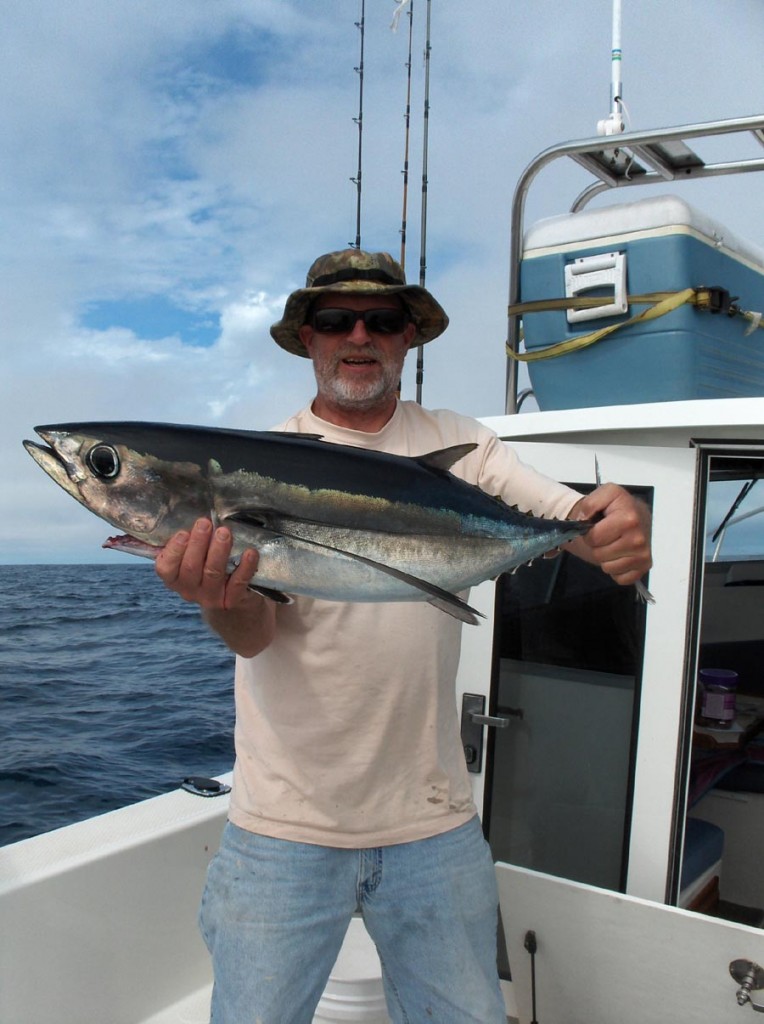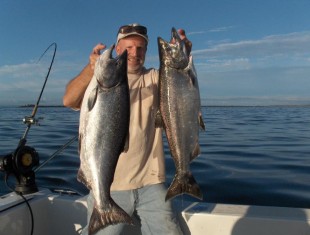EARL SANDE
By Earl Sande
Eastern Russia once had the largest salmon runs in the world. The amount of Pacific salmon going up the rivers was so immense we will never know the exact numbers.
The first Europeans to witness this incredible sight was in 1740 when the famous Bering expedition explored parts of Eastern Russia. They then built several sailing ships on the beach and explored the coast of Alaska. Few actually made it back to the Mother Land alive.
One of their journals noted the fantastic number of fish clogging the streams and rivers, especially sockeye. They watched the natives harvesting salmon with homemade nets from boats and also from weirs built in the streams. Later in the fall when the rivers iced over they would chop a hole in the ice and just grab the salmon by hand and throw them on the ice by the hundreds.
It was reported that the natives ate so many salmon every day they actually smelled like salmon.
During spring, summer and fall the salmon would enter the rivers in such numbers they would be forced onto the banks by the thousands by other salmon only to flop around and die. As late as the 1920s, natives harvested over 20 million salmon annually; five million for themselves and 16 million for their dogs!
Some of the major rivers flowing out of Russia to the Arctic Ocean are the 1,100 mile long Kolyma, the 850 mile Indigirka, the 750 mile Yana and the incredible Lena River which is larger than Mississippi River and flows 3,000 miles to the Lapteve Sea north of the Arctic Circle.
One of the greatest Russian rivers flowing eastward to the Pacific Ocean is the famous Amur. She is 1,770 miles long with hundreds of lengthy tributaries and is a salmon producing machine. The Amur River drains an area of 1.2 million square miles, which is several times the entire Columbia River watershed that covers Washington, Oregon, Idaho, western Montana, Western Wyoming and British Columbia.
The weather in eastern Russia is some of the most hostile in the world. Temperatures during the long winter can dip to 90 degrees below zero. But despite the climate more than five million people lived there by 1970.
In 1890, naturalist Anton Chekhov studied the major rivers in eastern Russia and described one large river teeming with salmon:
“The mass of fish … is so great and its run so precipitous and so extraordinary that anyone who has not seen this magnificent phenomenon cannot actually understand it. The swiftness and density of the run can be judged by the surface of the water, which seems to be seething. The water has a fishy taste, the oars are jammed and the blades propel the obstructing fish into the air.”
Another Russian salmon story was recorded on July 30, 1926 on the Bolshaya River.
“Although the weather was calm and sunny, an extraordinary noise could be heard coming from the middle of the river between its main two channels. The population of the fishing camps rushed out to the riverbank. Standing there, the fishermen feasted their eyes upon a tremendous school of fish which went up the river, making a very loud noise, as if a new river had burst into the Bolshaya.
“The fish jumped out of the water continually. The noisy stretch of the water was at least one mile long and 350 feet wide, so that the size of the school could be estimated at several million specimens, which all got to the spawning grounds upstream having passed the fishing camps completely unimpeded.”
The Communist revolution of 1917 dramatically changed the life of the native people by forcing many of them into the modern world. Most of them would soon work at the organized collected farms and commercial fishing cooperatives. There would be no need for so many dogs and the life the natives knew so well for thousands of years was basically over.
The end of the massive salmon runs in eastern Russia stepped up after 1868 when Japan ended their self-imposed world isolation and pretty much took over the harvest of salmon, cod and herring in the western Pacific until World War II.
By the end of the war, the Russian navy had wiped out the Japanese fishing fleet. But by the 1950s the Japanese fishing fleet was bigger than ever and really took over the harvest of nearly all species of fish in the northwestern Pacific Ocean until the Soviet fishing fleet increased dramatically in the 1960s and 70s..
Modern man and nature sometimes don’t get along that well, I for one am glad some of this history was written down so we have a little idea of what once was.


